Iceland: How much things cost & how to visit on a low budget
Since its currency crash in 2008, Iceland had gone from absurdly expensive to somewhat reasonable in cost, and that has prompted thousands of new tourists to stream in to see what all the fuss is about. It’s hard to find a visitor to Iceland who didn’t absolutely love the place, but you won’t find anyone who tells you it’s cheap, so planning ahead is essential. Prices have continued to creep up in 2015 and 2016, so it’s again among the most expensive European destinations.
Many visitors arrive on an Iceland stopover going between North America and Europe, but with very cheap flights to and from Europe it’s becoming popular for adventurous types from all over the continent. In 2013 I spent 9 days in the country, always checking for prices and the cheapest ways of doing things, so below I can lay out how to budget and what to do to keep costs down.
Note: This article was first written in late 2013, but all prices have been updated as of December 2016 to be current through 2017.
Reykjavik vs. the rest of Iceland: Where to go
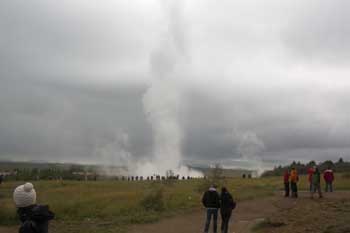
If you have one night or a few nights you are better off taking a bus or renting a car directly from the airport and heading east along the southern coast for some of the country’s best sights. If you have at least a week you’ll want to rent a car and do a lap around Iceland’s famous Ring Road, allowing you to see nearly everything the country has to offer in a neat and organized way.
Iceland accommodation: Hostels, guesthouses, and hotels
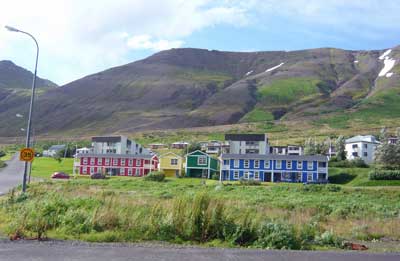
The most common form of accommodation in Iceland is a guesthouse and hostel combination which will have a mix of private rooms and dorm rooms, with shared bathrooms in down the hall. Most of them have fully equipped shared kitchens, so self-catering is at least as popular as eating out while exploring Iceland outside of Reykjavik.
High season (June through August) typical accommodation prices
All prices quoted in US dollars at a rate of about 110 Krona to US$1 in December, 2016.
- Hostel dorm bed: US$34 to US$58
- Single private with shared bathroom: US$85 to US$135
- Double private with shared bathroom: US$118 to US$140
- Double private with en-suite: US$130 to US$320 (and up)
Prices in Reykjavik are a bit higher than elsewhere in the country, but not by much. Prices in the off season are about 30% lower than in high season, but in the slowest months many places close so rates never go much lower than this.
Most Iceland guesthouses are NOT on the normal hotel-booking sites
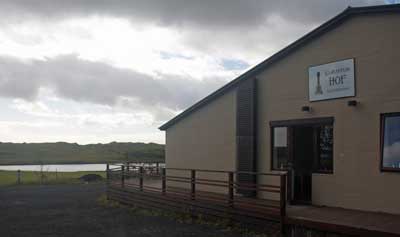
The good news is that when you get to Iceland, the tourism office will give you a directory of almost every guesthouse on the island, and there are other ways of finding these guesthouses and other informal accommodations. Even as of late 2016 you should be able to book a double room (with shared bathroom) for about US$120 per night in most towns in Iceland. If you do a hotel search you might see prices that are double that, but those are in the few formal hotels with 24-hour lobbies and such.
Increasingly, Airbnb and other online rental sites are the best place to find guesthouse accommodation in Iceland. As of only a few years ago, most places would be booked by phone or in person on arrival day, but now more and more places can be pre-booked, at reasonable prices.
Sleeping bag accommodation in Iceland
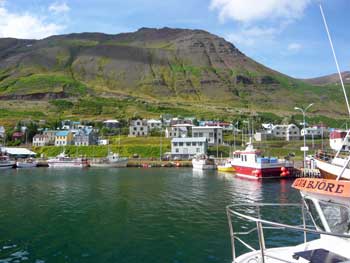
In a ‘sleeping bag accommodation’ (as it’s known in Iceland) you’ll get a bed with a mattress and often a pillow. So with even a cheap indoor sleeping bag, you’ll be comfortable and warm while saving quite a bit of money. For those renting cars, this is a highly recommended strategy.
You can rent sleeping bags in Reykjavik starting at around €12 per week.
Most Iceland attractions are free (the good news)
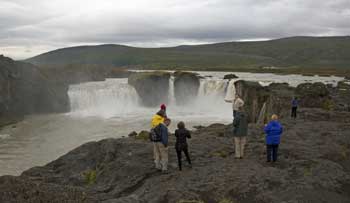
So to see all the glaciers and waterfalls and volcanic beds and other scenic attractions, it’s all free of charge with no admission cost or even parking fees. The larger attractions also have visitor centers where you can get local advice for free as well.
Iceland transportation: Rental cars and buses
Even as a lifetime public transportation fan, I’m very glad I gave in and rented a car to tour Iceland, even as a solo traveler. For the most part the roads are in perfect condition and virtually empty even in high season, so driving couldn’t be easier. Also, the country has stunning vistas every time you turn a corner, so being able to stop in the middle of the road even if there is no room to pullover, is critical.
The buses are modern but also expensive and running on very limited schedules. If you only have enough time to cover the main sights along the southern coast you might buy one of the bus passports that allows you to hop on and hop off, though a rental car is still much better and easier.
Rental cars in Iceland: What you need to know
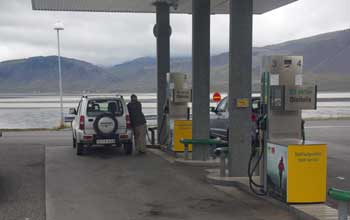
For an extra fee you can pay to reduce that deductible to almost nothing, but the more popular add-on is the Gravel and Glass insurance. For around €10 per day with this coverage you have a zero deductible if the vehicle gets damaged by gravel or if any glass gets broken by flying rocks (or anything else). Unfortunately, many of Iceland’s side roads and even a few of the main roads are covered in gravel, and if you drive at anything above a crawl, there will be some gravel flying around.
Personally, I normally decline add-ons like this but in this case I bought the Gravel coverage after reading a few horror stories in online reviews. I didn’t get any damage that I’m aware of, but the peace of mind was worth a LOT when driving on isolated gravel roads so I wasn’t petrified that I was chewing up the paint job just trying to stay safe on the roads.
Rental cars in Iceland
- 2-wheel drive compact (manual): US$230 per week and up plus add-ons
- 2-wheel drive compact (automatic): US$270 per week and up plus add-ons
- 2-wheel drive mid-size: US$450 per week and up plus add-ons
- 4-wheel drive van or SUV (automatic): US$650 per week and up plus add-ons
Daily rates are about 20% as much as weekly rates, so 5, 6, or 7 days cost the same.
Add-ons
Gravel coverage: US$10/day
GPS (highly recommended): US$10/day
Additional collision waiver: US$10/day
Fuel prices in Iceland
Every gas station in the country has the same prices, which don’t seem to change much. As of December 2016, a liter of petrol is 194 Krona, which is about US$1.75 or €1.63, or about US$7.50 per gallon.
Bus pass prices in Iceland
For a quick day trip from the airport to some local sights you can spend as little as US$90 per person, but for the longer distance buses you’ll spend at least US$130 to US$250 depending on length of time in order to hop on and hop off.
A Ring Road passport will cost around US$400 per person, so for two people it’s no cheaper than renting a car, even after fuel is taken into account, and for 3 or 4 people it’s definitely cheaper renting a car.
Food prices in Iceland
Here’s the thing: sit-down restaurants in Iceland are very expensive by international standards, so there aren’t very many of them. Obviously Reykjavik has many restaurant choices but most smaller towns might have only a few at most. The good news for budget travelers is that fast-food options are more plentiful, and self-catering is even cheaper and easier.
Restaurant prices in Iceland
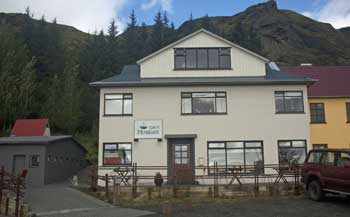
A soft drink, coffee, tea, or even bottled water will generally be between US$3 and US$5 in a restaurant. A pint of beer will typically start at around US$7 at even the cheapest places, while wine and spirits cost even more.
Fast food prices in Iceland
In Reykjavik and larger towns (which might only have 2,000 residents) you’ll have many fast food options including Subway, Quiznos, and usually a few local burger or hot dog places. Prices for a sandwich at Subway are about US$6 for a 6-inch and US$10 for a foot-long, so they aren’t too much higher than elsewhere in Europe, and are sure cheaper than proper restaurants.
More good news for drivers is that many gas stations around the country have fast food restaurants built in, so it’s fast and easy to pick up a sandwich or hot dog by the side of the road.
Hotel breakfast prices in Iceland
Many hotels and guesthouses in Iceland serve breakfast, but it’s almost always at an extra fee, and many don’t serve anything at all. If a breakfast is offered it will typically cost between US$12 and US$15 for a buffet of cereals, bread, cold cuts, cheeses, hard boiled eggs, juices, coffee and tea, and perhaps some pastries.
Making your own self-catering breakfast will be cheaper, but since you can stuff yourself for a flat fee at the breakfast buffets it might be worth it to save yourself the hassle of shopping the day before and making breakfast in the morning.
Self-catering in Iceland
The best budget tip for Iceland is to buy and prepare your own food, and you can literally do it for all three meals per day if you prefer. Since Iceland has almost no national “must-try” dishes, you can buy and prepare your own food without worry about missing anything meaningful.
Nearly every guesthouse in Iceland has a shared kitchen where at least half the guests will be storing and preparing breakfasts and even dinners. They have refrigerators, coffee makers, electric kettles, pots, pans, dishes, and silverware, as well as salt and other spices, so you can buy just the food and you’ll be able to prepare it all.
Supermarket prices in Iceland

For example, you can buy a 400 gram (1 pound) block of Havarti cheese for around US$5, but a similar looking cheese right next to it on the shelf might be US$15 for the same amount. The same is true for lunch meats. Sliced ham can be US$3 for enough to make 2 sandwiches, but sliced roast beef might be US$10 for the same amount.
Some sample prices in the cheaper Iceland supermarkets
- Sliced white bread: US$1.70 per large loaf
- Fresh baguette: US$1.50 to US$2 each
- Hot dog buns: US$2.50 for 5
- Pork hot dogs: US$3.50 for 5 large hot dogs
- Cheap Havarti or other local cheese: US$5 for 400 grams (1 pound)
- Imported cheese: US$10 to 15 for 400 grams (1 pound)
- Sliced ham for sandwiches: US$5 for 400 grams (1 pound)
- Sliced roast beef for sandwiches: US$12 for 400 grams (1 pound)
- Pasta: US$1.50 for .5 kilogram (1.1 pounds)
- Pasta sauce: US$3 for a .5 liter jar
- Ground beef: US$5 for .25 kilos (half pound)
- Bake-at-home pizza: US$5 to US$7 for one person
- Bag of tortilla chips for 2 or 3 people: US$2
- Jar of salsa for those chips: US$3
- Breakfast cereal: US$3 to US$5 per box
The prices above are for many of the cheaper and more common things that budget tourists buy in Iceland. As mentioned above, if you want something exotic and imported, it might cost double or triple what you pay at home, if you can find it at all.
Alcohol prices in Iceland
In restaurants and bars throughout the country you’ll pay at least US$8 for a pint of beer, and at least US$10 for a glass of wine or a simple cocktail. If it’s a fancy place you’ll pay even more, of course.
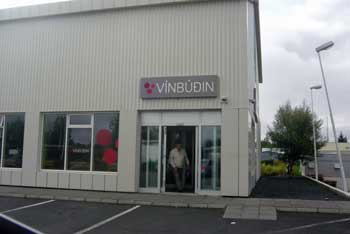
Here are some typical prices for alcohol:
- 330ml can of local beer: US$2 to US$3
- 500ml can of local beer: US$2.50 to US$4
- Cheapest bottle of wine: US$10 to US$12
- .7L bottle of off-brand vodka: US$30
- .7L bottle of mid-level brand vodka: US$50
Bottom line on doing Iceland as cheaply as possible
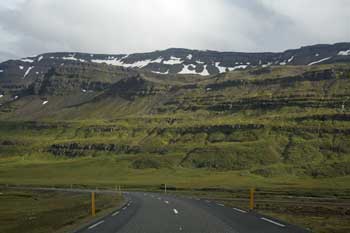
Whether you are going to get dorm beds or private rooms, as long as you will have your own wheels it’s worth renting a sleeping bag. You get the same bed and same services for about US$10 less per night, which will pay for a week’s rental of an indoor sleeping bag.
Unless you are a terrible driver or afraid to drive, it’s highly recommended to rent a car instead of trying to get around using buses. Once you get there you’ll see that having 100% flexibility with a car compared to almost no flexibility with a bus, is worth a LOT.
Instead of trying to be cheap with transportation, be cheap with self catering food and drinks for yourself. If you have at least a small group of people you’ll be able to have a party each evening in or near the shared kitchen of your guesthouse, and it will be more lively than any restaurant in town.

What a great resource this is! We are going in April and are glad we found this site.
Hi Roger!
Thank you for the information in the article! I am going to Iceland with my two children in June for theee days on a stopover. What things do you recommend seeing on that short of a visit and where do you recommend staying for the nights?
Thanks for any advice!
Sunie
Sunie,
If you have only 3 days I highly recommend renting a car at the airport and spending your time along the southern coast. Reykjavik itself is quite boring compared to the amazing scenery of the island, and the best sights are all packed in along the southern coast. There is a town near the eastern coast called Hofn and one along the center of the southern coast called Vik. Those are both lovely small towns that are near some of the best sights. I would drive from the airport in the direction of Hofn and after a night there head back towards Vik and then the airport. Buy a guidebook or do more online research for the locations of all the best sights along that coast. There is an ice bay, a few national parks, waterfalls, lava fields, spring geysers and much more. Those other towns are also a bit cheaper than Reykjavik, and the parking is all free, unlike the capital. There is also a group of attractions called the Golden Circle (not to be confused with the Ring Road) that are all fairly close to the capital and the airport. Those are good if you only have one day, but there are many better sights since you have three, so I would save those for your last day. Let me know if you have any other questions. -Roger
Hi Roger,
We are planning a visit to Iceland. We are thinking somewhere between end of Aug to end of October. We would be staying 6 days. What time would you think would be the best?
I’ve looked into tours, but they are pricey. We don’t want to waste time trying to find attractions. We want to try and see as much as wee can. What do you suggest doing? In reading your column I’m thinking renting a car is probably the best for sightseeing and cost, thoughts?
Any other suggestions you can give would be great. It’s our honeymoon and we would like to see the Northern Lights if possible.
Thank you!! I love your blog, it has given me a lot of information.
Christy,
Thank you for the kind words. The peak tourist season in Iceland runs from June through late August, and it starts thinning out a bit after that. If you can go in early September you will get lower hotel and rental car prices, and much smaller crowds. I would go as early as you can since the days start getting shorter and it gets cooler pretty quickly. Iceland is all about the dramatic scenery, so having longer days and warmer temperatures is a big help. As long as you can afford it, I would definitely rent a car. Having that freedom to go anywhere you like when you want is a huge benefit in Iceland, since the tours and public buses are on very fixed schedules.
If you could stay even 7 days then you would have time to drive the entire Ring Road, but 6 days would be a bit of a rush. If you could stay 7 days or if you wanted to rush a bit and do it in 6 days, I would rent a car at the airport and skip visiting Reykjavik altogether or perhaps just on your last day. It’s a nice city, but it’s not very distinctive and kind of boring, as well as very expensive. The thrills in Iceland are the scenery, and the area around Reykjavik is the least scenic part of the island. If you didn’t want to do the Ring Road then I would focus your stay on the south coast, going as far east as Hofn and spending most of your time between Hofn and Vik and then head back towards Reykjavik for some of the more famous sights there.
The Northern Lights is mostly a winter phenomenon, so generally visible between November and February. In other words, it’s unlikely you’ll see any of it when you go. On the other hand, I would definitely recommend a summer trip to Iceland for your first time because the scenery and sightseeing isn’t nearly as nice in winter. Let me know if you have any other questions and I’ll try to help. -Roger
Roger:
Excellent blog and very informative so thanks.
I’m planning on going for a last-minute trip for one week in the middle of this November.
First time visiting and will be there for six days, which includes the departure date.
I’m considering spending the first day(arrival) in Reykjavik and then renting a car and drive east in the Ring Road, staying At guesthouses along the way.
I don’t intend on going up any mountains so I’ll stick with a regular car.
Do you think it might be too much to do a complete circle of the Ring Road at this time of year, without rushing?
Also, are there working dairy farms open to visitors that you know of? I’d also like to visit a “farm” that makes Eider down products, but I’d assume that’s in the springtime.
Thank you.
Rafi,
As I’ve mentioned before, I did the whole Ring Road in 7 days, but I could have pretty easily done it in 6 days because I spent the whole last day fairly close to Reykjavik, and those sights are the least impressive when you’ve done the whole island. When you look at the total distance of the Ring Road it seems that it should be pretty easy to do it in 4 or 5 days, but even if you could I don’t think it would be too enjoyable, especially in November when days are shorter. You’d be driving a lot in the dark, which kind of ruins the scenery aspect of it. There are some areas where you can go maybe 80 KPH, but much of it is very windy and also very scenic, so there are long stretches where you can’t drive or wouldn’t want to drive faster than 40 or 50 KPH.
With six days and especially if you want to spend one of those in Reykjavik, I would focus on the southern coast. The stretch between the airport or Reykjavik and Hofn contains at least half of the major scenery thrills of the Ring Road. In those 5 days you could see it all pretty easily without having to drive (much) in the dark. And you could base yourself in Vik for a couple nights so you don’t have to find a new guesthouse every day. Doing the whole Ring Road is amazing, but it IS a lot of driving and with the shorter November days I think it would be a rush to do it in less than 7 driving days.
I’m not sure about any dairy farms open to the public. I passed some working farms, but I don’t remember seeing any that had a visitor center. Hopefully you can find that info elsewhere. Let me know if you have any other questions. -Roger
I am planning a trip in Early April 2018.I first thought that I would drive while there but then I read several blogs from people who say DO NOT drive because of the unpredictable weather that included strong wind gusting. I live in a warm climate and we get ice on the roads one or two days a year. With my inexperience should I avoid driving?
Darleen
Darleen,
I haven’t been to Iceland in April, but I’ve been following travel advice and tips for the country for a few years ago and this is the first I’ve heard of that. It was windy at times while I was there in late August, but that was never a problem for me. As I have discussed in the article above, I did the whole Ring Road and mostly stuck to main roads in general, and on those I really don’t think high winds would be a problem, and I don’t think you’d get ice on the roads in April on or near the Ring Road because it’s nearly as sea level.
There are basically two types of self-drive visits to Iceland. The most popular one is the one like I did where you stay on the main highways for the most part, which are very well maintained, and stay mostly at sea level. The other type is those who want to go up the mountains and into the interior of the island, and for that you need to rent a 4-wheel-drive vehicle. I would think that that kind of visit would be much more susceptible to inclement weather because you are off road much of the time and sometimes at altitude.
So you may want to seek another opinion, but I actually found driving in Iceland to be incredibly easy because the roads are in good condition and there is almost zero traffic to deal with. Another thing to consider is what would your alternative be? The only real option would be to take the public buses or the tour buses, and with either of those your movements are severely limited by the fixed schedules. For me, driving around Iceland was one of the most glorious driving experiences I’ve ever had because it’s so beautiful and I could go where I wanted whenever I wanted. I hope this helps. If there is a condition in April that I’m not aware of, which is possible, you might want to do more research. On the other hand, if you look around the internet long enough, you can find people who say that literally everything is a bad idea. Best of luck. -Roger
Hey Roger,
What a wonderful blog I have come across today!
So, my friends are very keen to see the Northern lights. Hence, we have booked for Iceland around end November fro 7 days. I am a bit skeptical about the possibilities of making much out of this trip. As the daylight will be for short hours and Northern Lights are always unpredictable. I don’t know how to make the best out of it.
If you can just suggest me with a convincing itinerary PLEASE.
Thanks
Neha
Neha,
Sorry that I won’t be of much help. I went in late August and I have been studying more or less the “summer” sights and strategies. The Northern Lights tours have suddenly become quite popular in the last few years, and I haven’t done one myself. Hopefully you can find a good source for information on how to see the Northern Lights on your own. I think tours are probably a better choice for most people, since they include late-night transportation to the best viewing spots.
Still, I’m quite sure you’ll enjoy your trip. I’ve been very far north in November and it’s not quite as bad as most people imagine. Even though the sun technically “rises” at 10am or so and sets before 4pm, it’s not very dark before and after that. So you can still do most of the same sightseeing, but it will be like sunrise or sunset for more of the day than you are used to. Sorry I am not of more help. -Roger
Roger,
Today is Sept 3, 2017 and I shall be staying in Iceland Nov 1 – 8 for 8 days and, of course, am renting a car from Sixt also. I booked the Iceland Airwaves music festival, package w a Hilton Hotel Nordica as a base camp, great hotel rate, and will be mostly out of the hotel in the rental car hotel on wheels car camping, sleeping bag, showers will be swimming holes and food at the local grocery store as you have thoroughly documented as affordable. I’m also an elite hang glider pilot, para glider pilot 2nd,from the States and this travel to Iceland is to find and discover new launch sites. I have only read about half of the posts in this site today and decided to quickly scroll to leave you a very complimentary, THANK YOU ROGER for your kind detailed posted experiences, attached note expressing my appreciation to you for your thorough Iceland written helpful posts to everyone who has a chance to find this including myself. In June and July 2018 I will be returning to Iceland shipping my hang glider via ASL Cargo to then fly these soon to be discovered awesome mountains and hopefully enjoy a few cross country flights to land near the ring road. I have searched and about to make contact with the sole two hang glider para glider pilots in Iceland to hook up with them briefly this trip to see their local flying site in advance of next summers extended 6 to 8 week stay in Iceland flying my wings there. I have the Sectionals already, airspace restrictions, for Iceland and from your initial article, many replies, using Google Earth Maps I see more than a few potential easy access from the ring road flying sites. Hikes with flying equipment weed out the men from the boys in our sport and the country of Iceland, w IcelandAir celebrating 50 years of aviation this Nov, 1937-2017, is well overdue for cross country hang gliding distance records and tandem distance records to be set in 2018 when I return with my custom VW roof rack to place on top of the VW rental to carry my hang gliders next season. Your article here,from nearly three years ago, is the most informative Iceland travelers post I have discovered on the internet, as others have previously commented, along with the interactive questions concerns responses and your assistance oriented replies for everyone. I shall check if my Garmin GPS has the Iceland Maps to forego the $10 per day GPS rental car fee. If not I will certainly include w my car rental. The Gravel and Rock Insurance is obviously a must for anyone thinking about driving the ring road and it is comforting to read your confirmation of that. I decided, due to time of the year being a early Nov trip of 8 days, w music festival attendance, possibility of severe inclement weather changes I can view on radar loops as they occur w forecasts, using the Hilton comfort base camp approach I can have flexibility deciding when to split town and head out to the Southern Iceland ring road and have multiple options of car camping and all the local on site advantages of trying to squeeze in as much as I can in this travel discovery of Iceland hidden flying sites no one has ever explored or pioneered.
I shall find out how cross country experienced the local flyers are once I meetup in Iceland. Have yet to hear back since writing their website Roger, YOU ROCK ! Trillion Thank you’s again ! Looking forward to eating a nice Subway foot long sandwiches, near mainland USA prices, just as I discovered in SPB.RU when I was there in 2011. There is a Subway located just down the block from the Hilton Nordica easy walking distance, or if inclement weather persists I will hop in the VW rental car and zip over to grab a good meal avoiding sit down expensive restaurants. You didn’t mention your Subway experience in your posts so I can only gather you made your own up during your travels at an even greater savings. Take care, and please keep writing articles from your travels you are one of the best assistance helping travelers I have ever had the pleasure of reading about
following your experiences. Best to You ! David
David,
Thank you for the long comment and especially for the kind words. I’m sure you’ll love Iceland like the rest of us. I did get some price updates from some recent visitors to Iceland, but I also hear that prices are going up in general, partly because it’s gaining in popularity each year. My guess is that Subway sandwiches will be more like 50% more than you are used to at this point, but at least it shouldn’t be much worse.
And I’m confident you’ll agree that avoiding the sit-down restaurants is a great way to stay on budget. It’s much easier to do this in a country with so few temptations in the local cuisine. Let me know if you have any other questions. -Roger
Roger – we are going to be in Iceland for 7 days in late September and plan on doing the Ring Road. Understand that that is hard to recommend towns to stay at each night along the way. Should we make all room reservations ahead of time before we leave or should we make some reservations when we are in Iceland to give us some flexibility on where we want to stay?
Thank you!
Leo,
This topic is very confusing until you get there, and I was wondering the same thing before I arrived. Things are probably changing a bit in the last year or two, with more places being listed on Airbnb and such. But a few years ago only a small portion of the guesthouses in these smaller towns were listed on hotel-booking sights. So when I’d do a search before I got there I would see 2 expensive hotels in a town that I know is popular with Ring Road people. But when you get to Iceland you can get a free catalogue of every guesthouse in the country at the Tourist Info offices, including one at the main airport. With that you’d see that there are maybe 20 guesthouses in that same town with only 2 hotels.
It seems that most people who do the Ring Road just stay one night in each town and then find another place the next night. As a result, since most beds are vacated every day, it turns out to be easy to find a bed on the day you arrive. What I did was get a local SIM card, which gave me coverage almost 100% of the time around the Ring Road, and I would call the place I wanted to stay around noon each day, when I’d know about how far I wanted to go. I think in almost every case they had a room available for me, which they held with just my name and a promise to show up. But again, I believe more of those places are listed on Airbnb now, so at least you could reserve them online in the morning if you like. You might get cheaper rates by just calling though, since they don’t have to pay the commission though.
I think I mention this in the article above, but in case I didn’t, most of these “guesthouses” are large homes with many bedrooms and a few bathrooms, plus a community kitchen and living area. Those are quite a bit cheaper than standard hotels with ensuite and such. And since the local restaurants are so expensive and rare, most people buy food at a supermarket and prepare something themselves at the guesthouse. It’s really fun and a great way to meet people if you are interested in that. The same is true for breakfast, although most people get a very early start, partly because there isn’t much to do at night and the scenery is so amazing.
Long story short, the country is very well set up for people who aren’t sure where they are going to sleep that night. And by late September I’d guess that you could probably just show up at most places and get a room. I think the more popular places are booked out in advance in July and early August, but the season really slows down by early September. Let me know if you have any other questions. -Roger
Thank u so much for all of this fabulous information! My 20 year old daughter and I plan on visiting Iceland
In November. Being two females I want to be sure we feel safe during our visit. We are open to any suggestions
U may have as far as accommodations. I probably would prefer a hotel of some sort. Do u know if there will be bus
Tours to the main attractions during this time of year? Do u think two woman would be able to handle a 4×4? I am
willing to rent a 4×4 but I am getting nervous thinking about driving in the snow/ice. Also , do u think we should stay in
one locatorn or change locations? We are there for 5 nights.
Thank u so much for ur input!
Desiree,
As a man it isn’t easy for me to comment on safety for two women, and you should be able to get more useful information on any number of travel blogs where one or more females visited Iceland themselves recently. That said, it literally seems like the last place in the world you’d have to worry. There seems to be close to zero petty crime in Iceland, and actually zero violent crime. It’s also quite a rich country where there are basically no “poor” people, and no poor visitors because it’s so remote and expensive. If you stayed in hostels with large dorm rooms you might have to worry about locking up your stuff during the day, which is true everywhere in the world. But that is probably the worst that could happen.
Anyway, I’d recommend staying in guesthouses rather than hostels. Most places have lockable bathrooms down the hall, usually about one bathroom for every 4 rooms or so. And most guesthouses have public kitchens where many guests cook their own dinners and breakfasts each day. There aren’t many restaurants in Iceland outside of Reykjavik, and all of the sit-down places are very expensive. So it’s a real community feeling in the guest kitchens in the evenings and mornings. You can find traditional hotels in most cities and towns, but they will be quite a bit more expensive, and not nearly as interesting or memorable.
There usually isn’t much snow that sticks on the Ring Road or the main highways as far as I know, even in winter, but you could get some. Normally the 4X4 rentals are for people who want to explore places on the interior of the island, which has few paved roads. If you stick to the famous waterfalls and sights closer to the coast, you probably won’t need a 4X4. That is where most of the best sights are anyway, and the interior is more for camping and adventure travelers rather than sightseeing. However, you should probably research that a bit more and read the account of someone who visited in November.
With 5 nights you won’t have enough time to do the Ring Road, and the northern parts of that would be kind of dark and mostly empty in November. I’d recommend spending your time along the southern coast. From Reykjavik you can rent a car (in the city or at the airport) and go as far as Hofn in the east. Stay there at least one night and maybe two. Then drive back to Vik, which is in between and stay there for 1 or 2 nights. Most of the best sights along the southern coast are fairly close to those two towns, and they have many guesthouses and a couple supermarkets so they are good bases. You might also spend a night or two in the Reykjavik area, although maybe not in the city center because it’s very expensive and parking won’t be easy. As always, let me know if you have any other questions. -Roger
Hi Roger,
Will be coming to Iceland Aug 29, staying until Sept 04. Little intimidated by the dress code. How cold will it get, how many layers do I actually need? Basically how can I blend in without spending too much money for only a few days? Then my problem is I’m going to Prague so packing is an issue.
Will most likely be staying in a hotel. Do you recommend driving seeing sights then heading back at night or should I keep moving around, find a hotel room in whatever town I come across?
What’s the night life like? Tourists blending in with locals? What places to do you recommend? What do people wear when going out?
Thank you
Jack
Jack,
I was there in late August myself and it’s not nearly as cold as you might think. It should stay above zero all night and be around 53F/11C during the days. It can be very windy, however. Having a sweater and a thin jacket should be enough, and you probably won’t be out much at night because there isn’t much to do outside.
My top recommendation is to do the whole Ring Road, which takes 5 to 7 days depending on how many sightseeing stops you want to take each day. That’s what I did and it was one of the best experiences of my life, even though I did it alone. One great thing about that is that there are wonderful sights spread around the entire edge of the island, so you can just keep moving and stay in a different town each night. Since that is what most people are doing, it is pretty easy to find places (because each room empties each day). I got a local SIM card and I called to reserve places around noon each day, once I was sure of how far I’d go. I never had a problem getting a room in a guesthouse, and I really enjoyed each place I stayed. Many or most people cook their own dinners in the community kitchen, so it’s easy to meet people if you want to.
If you don’t think you have enough time for the Ring Road it’s probably best to focus most of your attention to the southern coast, going as far as Hofn in the east. I’d say around 50% of the best Iceland sights are along the southern coast, so it’s the best choice for trips not long enough for the Ring Road. In that case you could stay at a hotel in Hofn for 2 nights and another hotel in Vik for 2 nights and then another couple nights closer to Reykjavik. It might be worth spending one night in Reykjavik, but the hotels there are more expensive than anywhere else on the island. Reykjavik is known a bit as a party town, but alcohol is extremely expensive so the locals are known for pre-gaming at home and only going out at midnight for the last couple drinks in a bar or club. Outside of Reykjavik the “nightlife” consists of a small and expensive pub in a few small towns. Outside of Reykjavik, they are ALL small towns, including Vik and Hofn. You can buy alcohol more cheaply during the days at the licensed liquor store in each town, and at the larger guesthouses you’ll definitely see people sharing a few drinks over dinner in the evening. Still, most people seem to get up and out early because the scenery is the reason you are there in the first place.
The dress code is pretty casual, except perhaps at the poshest place in Reykjavik. Otherwise any collared shirt and jeans would be fine. The Icelandic people are pretty casual and sweaters are popular. Most of them speak English, especially the younger ones, so you’ll be able to speak to people easily and there are many other tourists, of course. That said, my guess is that a local can probably spot a tourist from the other side of the room, just like everywhere else that gets so many tourists. I hope this helps. Let me know if you have any other questions. -Roger